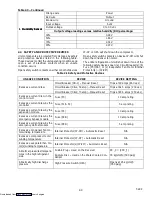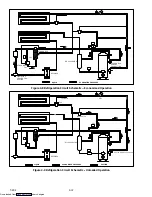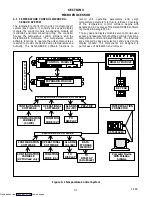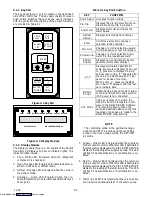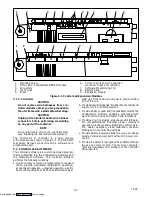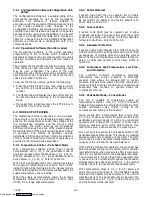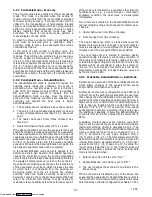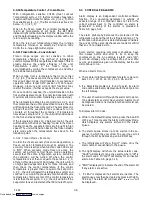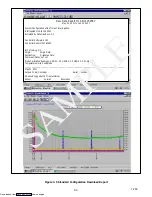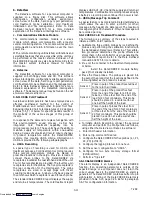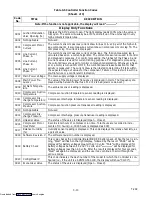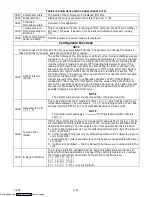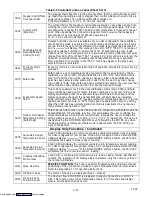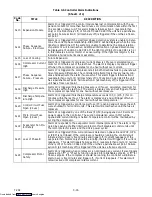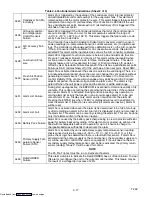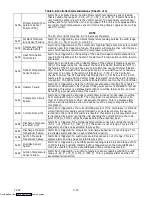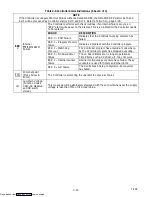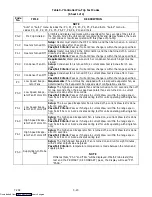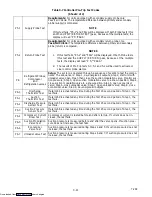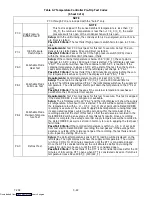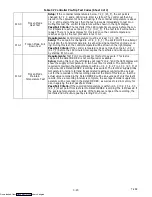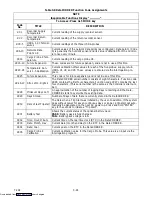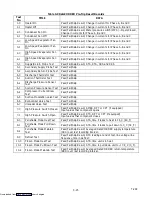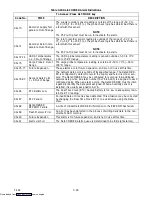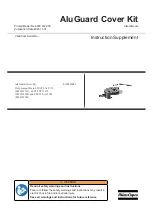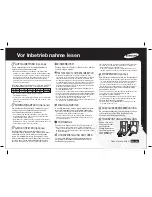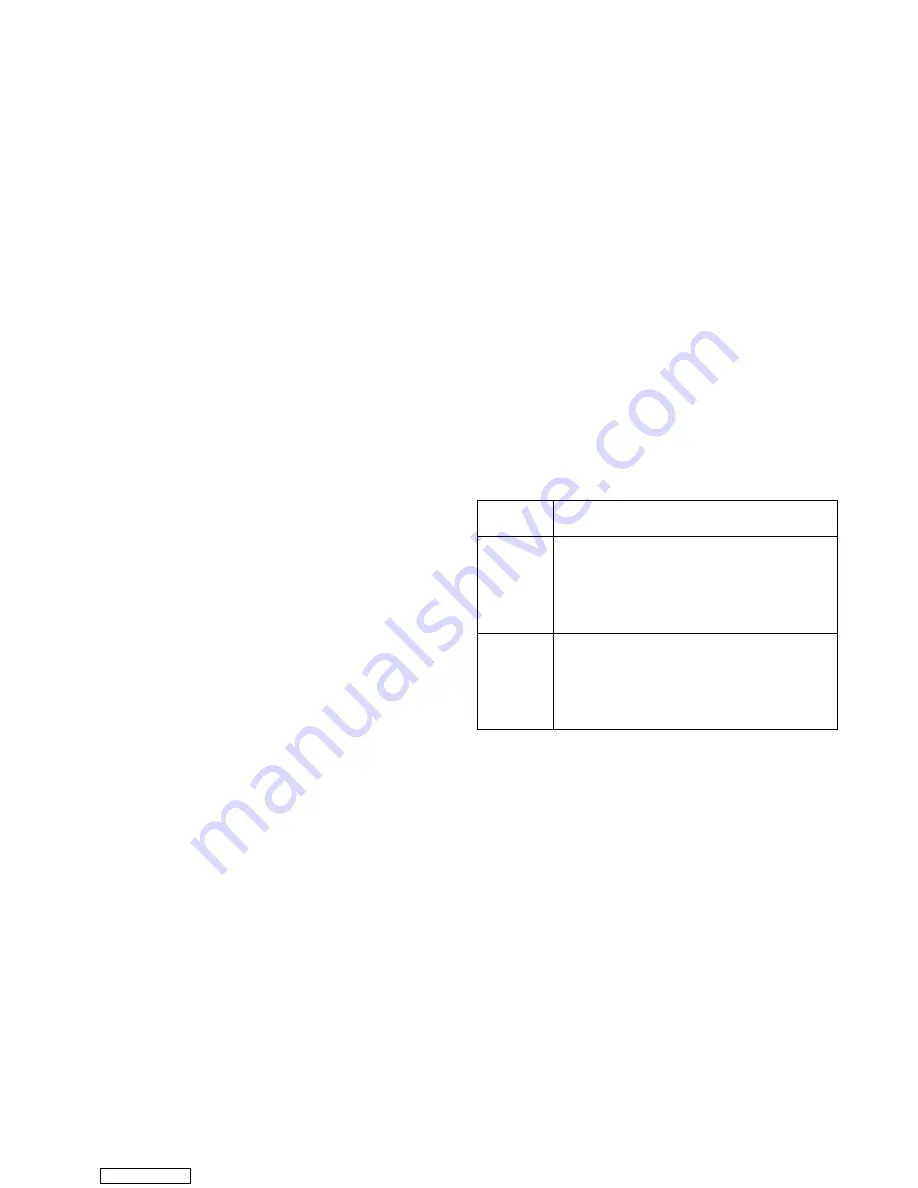
3-11
T-292
b. DataView
The DataView software for a personal computer is
supplied on a floppy disk. This software allows
interrogation, configuration variable assignment,
screen view of the data, hard copy report generation,
cold treatment probe calibration, cold treatment
initialization and file management. Refer to Data
Retrieval manual 62-02575 for a more detailed
explanation of the DataView interrogation software.
c. Communications Interface Module
The communications interface module is a slave
module which allows communication with a master
central monitoring station. The module will respond to
communication and return information over the main
power line.
With a remote monitoring unit installed, all functions and
selectable features that are accessible at the unit may
be performed at the master station. Retrieval of all
DataCORDER reports may also be performed. Refer to
the master system technical manual for further
information.
d. DataLine
The DataLINE software for a personal computer is
supplied on both floppy disks and CD. This software
allows interrogation, configuration variable assignment,
screen view of the data, hard copy report generation,
cold treatment probe calibration and file management.
Refer to Data Retrieval manual 62-10629 for a more
detailed explanation of the DataLINE interrogation
software. The DataLine manual may be found on the net
at www.contaner.carrier.com
3.6.11 USDA Cold Treatment
Sustained cold temperature has been employed as an
effective postharvest method for the control of
Mediterranean and certain other tropical fruit flies.
Exposing infested fruit to temperatures of 2.2 degrees
Celsius (36
_
F) or below for specific periods results in
the mortality of the various stages of this group of
insects.
In response to the demand to replace fumigation with
this environmentally sound process, Carrier has
integrated
Cold
Treatment
capability
into its
microprocessor system. These units have the ability to
maintain supply air temperature within one-quarter
degree Celsius of setpoint and record minute changes
in product temperature within the DataCORDER
memory, thus meeting USDA criteria. Information on
USDA is provided in the following subparagraphs
a. USDA Recording
A special type of recording is used for USDA cold
treatment purposes. Cold treatment recording requires
three remote temperature probes be placed at
prescribed locations in the cargo. Provision is made to
connect these probes to the DataCORDER via
receptacles located at the rear left-hand side of the unit.
Four or five receptacles are provided. The four three-pin
receptacles are for the probes. The five pin receptacle is
the rear connection for the Interrogator. The probe
receptacles are sized to accept plugs with tricam
coupling locking devices. A label on the back panel of
the unit shows which receptacle is used for each probe.
The standard DataCORDER report displays the supply
and return air temperatures. The cold treatment report
displays USDA #1, #2, #3 and the supply and return air
temperatures. Cold treatment recording is backed up by
a battery so recording can continue if AC power is lost.
b. USDA/ Message Trip Comment
A special feature is incorporated in DataLine/DataView
which allows the user to enter a USDA (or other)
message in the header of a data report. The maximum
message length is 78 characters. Only one message will
be recorded per day.
3.6.12 USDA Cold Treatment Procedure
The following is a summary of the steps required to
initiate a USDA Cold Treatment.
a. Calibrate the three USDA probes by ice bathing the
probes and performing the calibration function with
the DataReader, DataView or DataLine. This calibra-
tion procedure determines the probe offsets and
stores them in the controller for use in generating the
cold treatment report. Refer to the Data Retrieval
manual 62-02575 for more details.
b. Pre-cool the container to the treatment temperature
or below.
c..
Install the DataCORDER module battery
pack (if not already installed).
d. Place the three probes. The probes are placed into
the pulp of the product (at the locations defined in the
following table) as the product is loaded.
Sensor 1 Place in pulp of the product located next
to the return air intake.
Sensor 2
Place in pulp of the product five feet
from the end of the load for 40 foot con-
tainers, or three feet from the end of the
load for 20 foot containers. This probe
should be placed in a center carton at
one-half the height of the load.
Sensor 3
Place in pulp of product five feet from
the end of the load for 40 foot containers
or three feet from the end of the load for
20 foot containers. This probe should be
placed in a carton at a side wall at one-
half the height of the load.
e. To initiate USDA Recording, connect the personal
computer and perform the configuration as follows,
using either the Data View or Data Line software:
1. Enter ISO header information
2. Enter a trip comment if desired
3. Configure the DataCORDER for five probes (s, r, P1,
P2, P3) (dcf02=5)
4. Configure the logging interval for one hour.
5. Set the sensor configuration to “USDA”.
6. Configure for two byte memory storage format
(dcf04=LONG).
7. Perform a “trip start”
3.6.13 DataCORDER Alarms
The alarm display is an independent DataCORDER
function. If an operating parameter is outside of the
expected range or a component does not return the
correct values back to the DataCORDER an alarm is
generated. The DataCORDER contains a buffer of up to
eight alarms. A listing of the DataCORDER alarms is
provided in Table 3-10, page 3-26. Refer to paragraph
3.6.7 for configuration information.
Downloaded from
Summary of Contents for 69NT40-531 Series
Page 2: ...Downloaded from ManualsNet com search engine ...
Page 4: ...Downloaded from ManualsNet com search engine ...
Page 8: ...Downloaded from ManualsNet com search engine ...
Page 16: ...Downloaded from ManualsNet com search engine ...
Page 57: ...Downloaded from ManualsNet com search engine ...
Page 104: ...Downloaded from ManualsNet com search engine ...
Page 106: ...7 2 T 292 Figure 7 2 SCHEMATIC DIAGRAM Downloaded from ManualsNet com search engine ...

